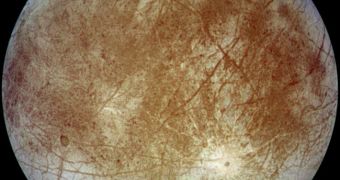Since Jupiter's moon Europa was first discovered, experts have proposed that it could contain life, given the large spreads of ice covering its surface. Now, a microbe discovered in the Canadian Arctic may finally confirm whether life on the Jovian moon is possible or not.
Investigators believe that the new study could in fact act as a blueprint in their search for life beyond our planet. The newly-found microorganisms appear to love living in sulfur.
The finding is very important because the thick, icy crust covering Europa may be acting as a shield for an ocean of liquid water underneath, similar to the one astronomers believe exists underneath the surface of the Saturnine moon Enceladus.
But one of the most notable things about Europa is the appearance of its ice crust, which is cross-crossed in all possible directions with what appear to be lines – as seen from orbit.
In studies, scientists have determined that these formations are very rich in sulfur, and have the color of rust. Following the recent investigation, the obvious question is whether those lines could support the lifeform found in the Arctic.
“Ultimately when we go to Europa, we’ll want to be able to tell if there’s any biological activity at all,” explained NASA Jet Propulsion Laboratory (JPL) astrobiologist Damhnait Gleeson.
He granted an interview for Wired yesterday, December 13 in San Francisco, at the 2010 annual fall meeting of the American Geophysical Union.
“These geologic features on Europa indicate a plumbing system, so material gets from the bottom to the top of the ice layer,” he added.
But if experts want to conduct missions in search of lifeforms on Europa, then they need to know what these organisms look like. Hence, they turned to the most accurate proxy for the Jovian moon, the Borup Fjord Pass in the Canadian Arctic.
At this location, large portions of land are stained yellow by pure sulfur deposits making their way to the surface. They were first observed in the 1990s by pilots flying overhead.
“It’s so unusual to find ice and sulfur together on Earth. It’s really not what you’d expect to see,” the JPL investigator went on to say.
He added that investigations carried in the Arctic in 2006 revealed that the sulfur was produced by organisms capable of disintegrating sulfide, another chemical compound.
“We can look at sulfur minerals that are formed by microorganisms, and we can tell they were formed by microorganisms,” Gleeson concluded.

 14 DAY TRIAL //
14 DAY TRIAL //